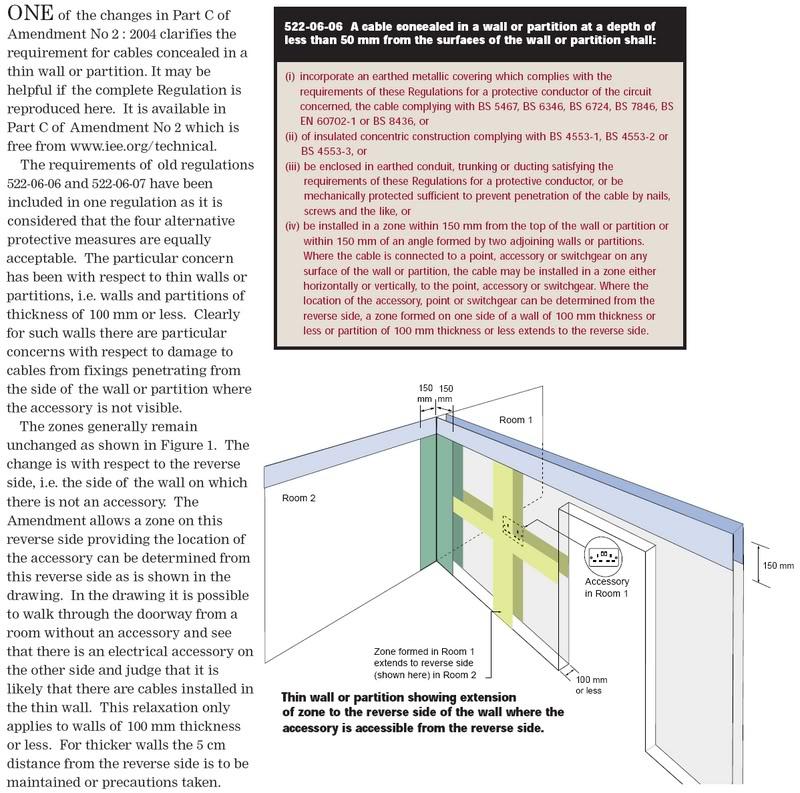You are using an out of date browser. It may not display this or other websites correctly.
You should upgrade or use an alternative browser.
You should upgrade or use an alternative browser.
choc block in socket
- Thread starter henry1
- Start date
Sponsored Links
Once the enclosure is secured, then that would be negligible.
what strain would it be under?
try drilling 2 small holes in the back of the box and use a cable tie.
try drilling 2 small holes in the back of the box and use a cable tie.
Sponsored Links
I assume they mean within the backbox of the outlet!Curious why you want to use a choc bloc within a socket.
So why would this be done?
*If the cables are too short, it will help extend them. Is often required when changing socket plates, as the terminals could be in differing positions to the ones of the outlet that has been replaced or if you wish to move the socket positioning a few cms, if the existing cable lengths are not suitable or if someone has accidentally cut the conductors too short
*Also you can use them to alter the circuit configuration, if altering/extending the circuit. It is better done in a safe accessible space and the backbox meets that criteria.
Other reasons could be the safe termination of disconnected redundant cable or the termination of a cable that is to be connected at a later date.
Likely the reason why the OP did not over elaborate.This invariably leads to a plethora of 'yes you can' or no you can't' responses.
I assume they mean within the backbox of the outlet!Curious why you want to use a choc bloc within a socket.
So why would this be done?
*If the cables are too short, it will help extend them. Is often required when changing socket plates, as the terminals could be in differing positions to the ones of the outlet that has been replaced or if you wish to move the socket positioning a few cms, if the existing cable lengths are not suitable or if someone has accidentally cut the conductors too shortor they are broken/damaged.
*Also you can use them to alter the circuit configuration, if altering/extending the circuit. It is better done in a safe accessible space and the backbox meets that criteria.
Other reasons could be the safe termination of disconnected redundant cable or the termination of a cable that is to be connected at a later date.
I thought there wouldn't be much strain on the cables but just wanted to check as JB connections are with screws too but always need strain relief.
In this particular case, I'd like to extend the ring circuit.
In another case, I would like to move the socket further away but the cables are too short. I could make connections at the site of the current socket to extend the cables to the new socket site. However, I will be plastering then tiling over the area where the old socket will be. Will an MF connection box allow me to plaster over it, something of the Ashley type?
Likely the reason why the OP did not over elaborate.This invariably leads to a plethora of 'yes you can' or no you can't' responses.
Wanted to keep it simple, but I did explain in the end.
I would recommend if the joint was to be buried within plaster, to go down the route of crimping and heat shrink. I would hazard a guess that most MF connectors and enclosures, product data would not allow them to be rendered into walls, but would likely state can be used in underfloor situations. If you know the product you intend to use, it would be worth reading through the product data or even contacting the manufacture or linking on here so can browse and may be someone has an informed answer.
But you could if possible, pull the existing cables back and make the MF joints within a ceiling/floor void and extend back up to outlet with continuous cables, then no need to render in a joint.
Or just install new cables to extend and have no joints!
Or just install new cables to extend and have no joints!
But you could if possible, pull the existing cables back and make the MF joints within a ceiling/floor void and extend back up to outlet with continuous cables, then no need to render in a joint.
Or just install new cables to extend and have no joints!
It's never that straightforward.
The cables drop from the ceiling once and run from socket to socket and includes the one I want to raise. The socket is behind a kitchen worktop which I will replace with one which will be higher, thus the need to raise the socket by about 15 cm.
What you propose is a lot of disruption and replastering for a mere 15 cm. If I could lay an extra 15 cm of cable, that will be 15 cm of digging into plaster and replastering. It won't even have to look pretty there because I will be tiling over it - but not up to the ceiling!
Sounds like you would b better off crimping then, remember that the cables must still remain in the permitted safe zones.
And the requirement for RCD on newly buried cable
And the requirement for RCD on newly buried cable
DIYnot Local
Staff member
If you need to find a tradesperson to get your job done, please try our local search below, or if you are doing it yourself you can find suppliers local to you.
Select the supplier or trade you require, enter your location to begin your search.
Please select a service and enter a location to continue...
Are you a trade or supplier? You can create your listing free at DIYnot Local
Sponsored Links
Similar threads
- Replies
- 19
- Views
- 3K



